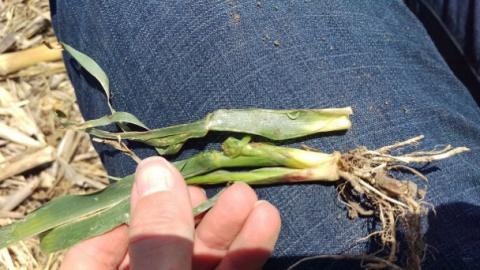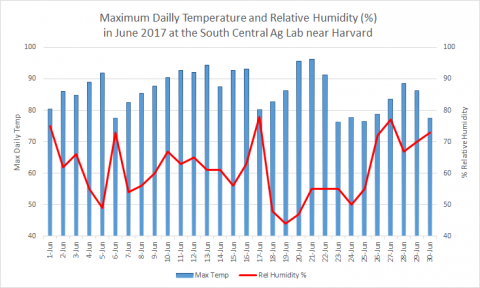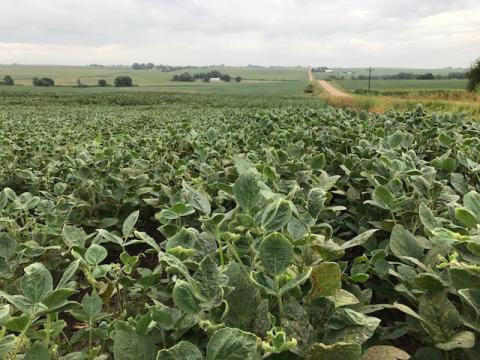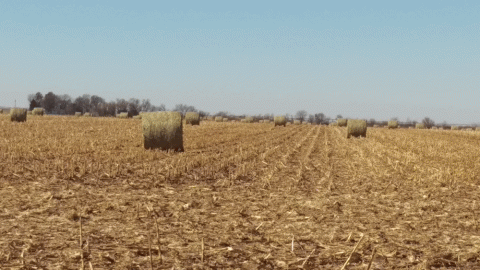March 14 Webinar on Wheat Stem Maggot in Cover Crops
March 2, 2018
A noon-hour webinar on March 14 will explore the issue of wheat stem maggot damage in corn planted directly into wheat or rye cover crops in 2017. Learn more about what happened and how to plan for 2018.
Potential Off-Target Dicamba Movement from Corn Applications
February 15, 2018
While the new soybean dicamba herbicides were often blamed for injury to sensitive plants in 2017, a deeper look at the timing of injury and the weather conditions at those times suggests dicamba applications in corn may have contributed to plant injury in many areas. Increased management for all dicamba applications will be needed in 2018.
Can We Manage Dicamba Applications in 2018?
February 15, 2018
Factors leading to dicamba injury and how growers will need to practice best management practices with all dicamba applications in 2018 to help reduce injury to susceptible crops and other plants. This article discusses key practices to implement.
Removing Dicamba Residues from Your Sprayer: A Tricky Task
February 15, 2018
Thoroughly cleaning your sprayer both before and after applying dicamba is required and can help reduce the potential for off-target damage. Check these recommended practices and see what research at Mississippi State University found when testing sprayer hoses.
Economics of Annual and Perennial Forages Webinar Feb. 13
February 4, 2018
With current corn prices and the limited availability of perennial grass, some producers are asking themselves if growing forages on cropland might be the answer to feeding the cow herd. A webinar to address these questions in addition to showing economic examples will be held Tuesday evening, February 13, from 6:00-7:30 p.m. CST.
Results of 2017 Survey on Nebraska Soybean Farmers’ Adoption of Xtend Technology and Off-Target Dicamba Movement
December 14, 2017
In summer 2017, 312 Nebraska farmers from 60 counties responded to a survey on their perception on dicamba use in Xtend soybeans. The survey asked about outcomes of applying dicamba in Xtend soybeans and perceived injury in non-Xtend soybeans.
Crop Residue Removal: Impacts on Yield
December 8, 2017
A review of multiple research studies indicates that where moisture is not limited, residue removal can result in no yield reduction to yield increases for the subsequent crop. However, long-term residue removal has been shown to affect other production factors and it's recommended that even in minimal erosion areas, removing residue does impact other production factors and it's recommended that 2.4 tons/acre of residue be left in the field.
Amelioration Strategies after Corn Residue Removal
December 7, 2017
The authors review three research studies on how amelioration practices such as adding cover crops and/or manure may offset any effects of removing crop residue.






